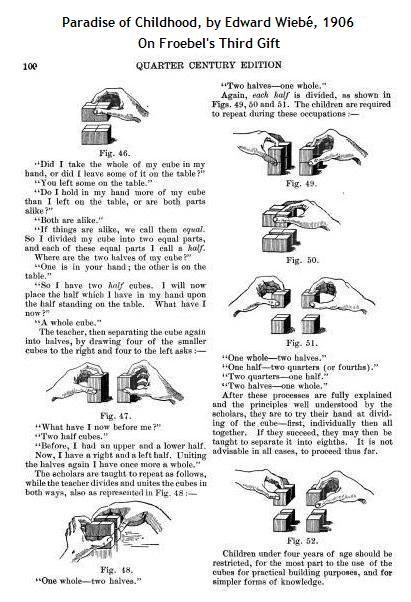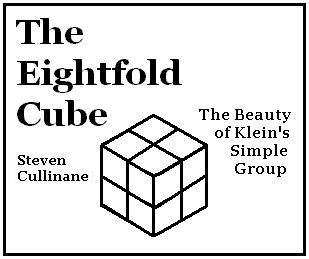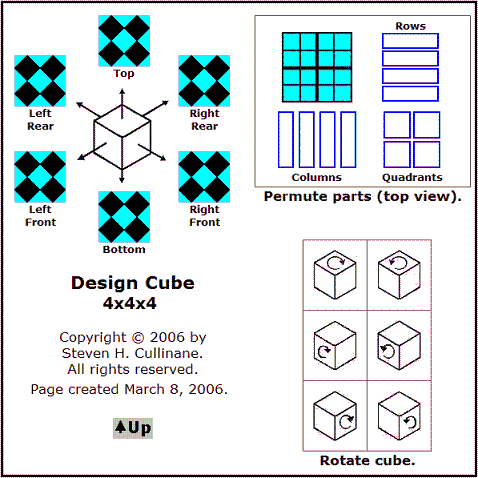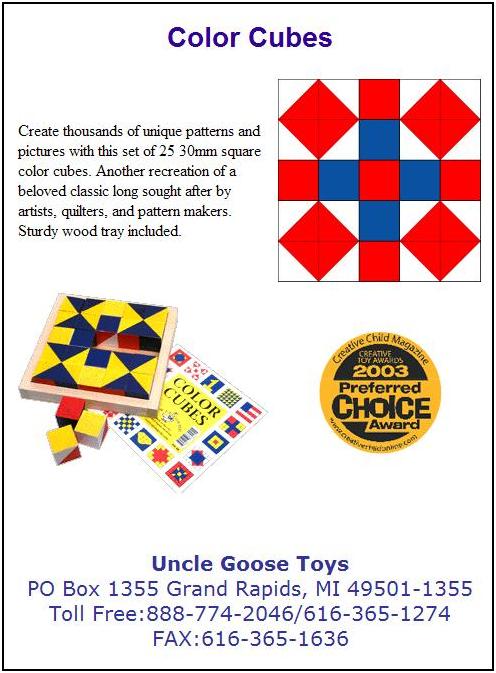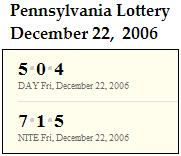It is well known that the seven (22 + 2 +1) points of the projective plane of order 2 correspond to 2-point subspaces (lines) of the linear 3-space over the two-element field Galois field GF(2), and may be therefore be visualized as 2-cube subsets of the 2×2×2 cube.
Similarly, recent posts* have noted that the thirteen (32 + 3 + 1) points of the projective plane of order 3 may be seen as 3-cube subsets in the 3×3×3 cube.
The twenty-one (42 + 4 +1) points of the (unique) projective plane of order 4 may also be visualized as subsets of a cube– in this case, the 4×4×4 cube. This visualization is somewhat more complicated than the 3×3×3 case, since the 4×4×4 cube has no central subcube, and each projective-plane point corresponds to four, not three, subcubes.
These three cubes, with 8, 27, and 64 subcubes, thus serve as geometric models in a straightforward way– first as models of finite linear spaces, hence as models for small Galois geometries derived from the linear spaces. (The cubes with 8 and 64 subcubes also serve in a less straightforward, and new, way as finite-geometry models– see The Eightfold Cube, Block Designs, and Solomon's Cube.)
A group of collineations** of the 21-point plane is one of two nonisomorphic simple groups of order 20,160. The other is the linear group acting on the linear 4-space over the two-element Galois field GF(2). The 1899 paper establishing the nonisomorphism notes that "the expression Galois Field is perhaps not yet in general use."
Coordinates of the 4×4×4 cube's subcubes can, of course, be regarded as elements of the Galois field GF(64).
The preceding remarks were purely mathematical. The "dreams" of this post's title are not. See…

See also Geometry of the I Ching and a search in this journal for "Galois + Ching."
* February 27 and March 13
** G20160 in Mitchell 1910, LF(3,22) in Edge 1965
— Mitchell, Ulysses Grant, "Geometry and Collineation Groups
of the Finite Projective Plane PG(2,22),"
Princeton Ph.D. dissertation (1910)
— Edge, W. L., "Some Implications of the Geometry of
the 21-Point Plane," Math. Zeitschr. 87, 348-362 (1965)



































